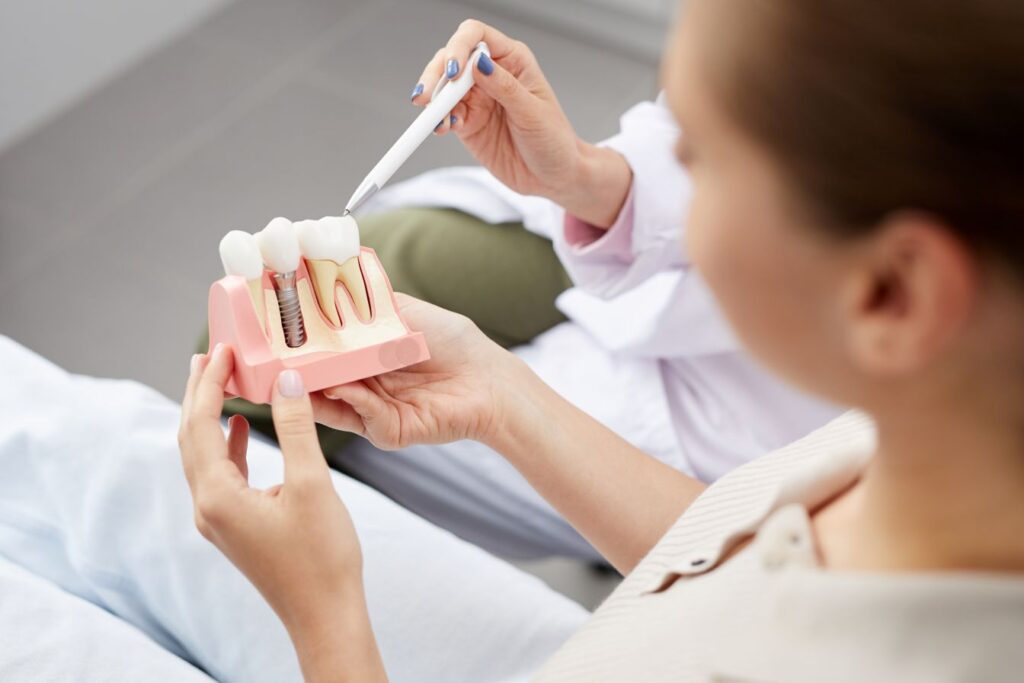
Losing a permanent tooth can do more than just leave an empty space in your smile. It can also cause a variety of oral health problems including jawbone deterioration. This could eventually lead to more tooth loss and make it harder for restorative procedures like dental implants to work. Thankfully, a sinus lift may help. This treatment can strengthen deteriorated bones, making them strong enough to support dental implants. Here’s what you need to know about sinus lifts, and why your dentist may have recommended one.
What is a Sinus Lift?
A sinus lift is a treatment that grafts bone to your upper jaw around your molars and premolars. It lifts the maxillary sinus membrane upwards, creating space for the growth of additional bone tissue. The maxillary sinuses are located closest to your teeth. That’s why you may feel like you have a toothache when you have sinus congestion due to allergies or a cold.
Do I Really Need a Sinus Lift?
If the density of your jawbone is not strong enough to support dental implants, your dentist may recommend a sinus lift first. That’s because in order for them to be successful, your dental implants must fuse with your jawbone via a process called osseointegration. Unfortunately, if your bones don’t have sufficient density, you’ll be at a higher risk for dental implant failure. Here are some common reasons you may need a sinus lift procedure:
- Prior injury to your jawbone from trauma or a difficult tooth extraction
- A cyst or tumor was previously removed from the area
- Jawbone deterioration from periodontal disease
- Receding bones from previous tooth loss
- A naturally large sinus cavity or thin jawbone
What Happens During a Sinus Lift?
To complete your sinus lift, your dentist will use bones from either your mouth, hip, or tibia. They will then cut out the gum tissue over the desired area, exposing the bone. Making a small oval-shaped opening in the bone, they will push away the sinus membrane and fit bone granule into the space where the membrane was. In most cases, they will add several millimeters of bone, however this will vary from patient to patient. Once they have inserted sufficient bone, they will stretch the tissue back together.
After your sinus lift, you will likely experience some swelling, and you may bleed from your nose and mouth. Do not blow your nose with force and avoid sneezing, if possible, as these could force your stitches open.
Your dentist will prescribe you a moisturizing nasal spray and decongestants to take while you heal, as well as medication to prevent infection. If you have not received dissolving stitches, you will be asked to return to your dentist’s office to have your sutures removed in about 10 days.
Your sinus graft can take between four and nine months to attach. Only then will your mouth be ready for dental implant surgery.
Remember, dental implants can restore your healthy, beautiful smile, but you may need to have a preliminary treatment like a sinus lift first. Thankfully, if your dentist has recommended this procedure, you can rest assured that it will help give your new prosthetics the best odds possible for success!
About Dr. Fisher
Dr. David M. Fisher Jr. earned his undergraduate degree and his dental doctorate from the University of North Carolina at Chapel Hill, where he participated in oral surgery rotations and special care and geriatric dentistry during his undergraduate education. He keeps current on his knowledge and dentistry skills by taking numerous continuing education courses each year. If you’d like to learn more about dental implants, please schedule a consultation by visiting our website or calling us today at 336-288-1242.

